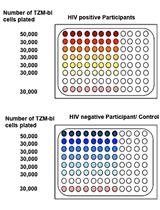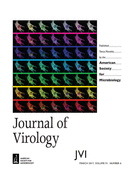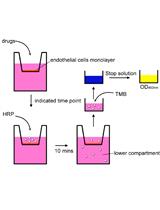- EN - English
- CN - 中文
Isolation, BODIPY Labeling and Uptake of Exosomes in Hepatic Stellate Cells
肝星状细胞中外泌体的分离、BODIPY标记和摄取
发布: 2017年12月05日第7卷第23期 DOI: 10.21769/BioProtoc.2633 浏览次数: 11828
评审: Anonymous reviewer(s)

相关实验方案

TZA, 一种基于敏感报告因子细胞学检测方法, 可用于准确快速量化静息CD4+ T细胞中可诱导的且复制能力强的潜伏HV-1
Anwesha Sanyal [...] Phalguni Gupta
2019年05月20日 7367 阅读
Abstract
Exosomes have emerged as an important mediator of intercellular communication. They are present in extracellular milieu and therefore, easily accessible by neighboring or distant cells. They carry mRNA, microRNAs and proteins within their vesicles and once internalized by recipient cells; they can modulate multiple signaling pathways with pleiotropic effects from inducing antiviral state to disease progression. We have previously shown that hepatitis C virus (HCV) infected hepatocytes or hepatoma cells harboring genome-length replicon secrete exosomes in culture supernatants. These exosomes are taken up by hepatic stellate cells (HSC) and activate them to induce fibrosis during HCV infection. Here, we describe detailed protocols for exosomes isolation and uptake of BODIPY labeled exosomes by hepatic stellate cells.
Keywords: Exosomes (外泌体)Background
Exosomes are small membrane-bound extracellular vesicles of 40-150 nm in diameter. They have been identified in all body fluids, including urine, amniotic fluid, serum, saliva, breast milk, cerebrospinal fluid, nasal secretions and in the supernatant of tissue cultured cell lines. Exosomes mediate cell to cell communication through transfer of microRNAs (miRs), mRNAs, and proteins, etc. which can be taken up by neighboring or distant cells and subsequently promote signaling in recipient cells (Schorey et al., 2015). Exosomes are enriched in proteins, including members of the tetraspanin family (CD9, CD81, CD63), heat shock proteins (Hsp60, Hsp70, Hsp90) and proteins of the multivesicular bodies (annexins, RabGTPases and endosomal sorting complexes required for transport [ESCRT] proteins). Recent studies suggest that exosomes can influence immune response (Li et al., 2013; Sun et al., 2016), facilitate productive infection in naïve hepatoma cells (Ramakrishnaiah et al., 2013; Shrivastava et al., 2015), disease progression (Devhare et al., 2017) as well as drug resistance to anti-cancer therapy (Qu et al., 2016). Most commonly used techniques for isolation of exosomes involves ultracentrifugation (UC) and ExoQuick (EQ) precipitation. In hepatitis C virus (HCV) infection, crosstalk between liver resident cells including hepatocytes, macrophages, endothelial cells, lymphocytes and stellate cells play an important role in disease progression. We have shown earlier that HCV infected hepatocytes or hepatoma cells harboring genome-length replicon secrete exosomes in the cell culture supernatants (Shrivastava et al., 2015). These exosomes carried miR-19a that induces fibrogenesis in hepatic stellate cells that might lead to liver fibrosis during HCV infection (Devhare et al., 2017). Here, we provide a protocol for labeling of exosomes with green fluorescent lipophilic dye, BODIPY that enables real-time monitoring and localization of exosomes within the recipient hepatic stellate cells.
Materials and Reagents
- Serological pipettes (5 ml, 10 ml, 25 ml) (Corning)
- 50 ml polypropylene centrifuge tubes (Corning, catalog number: 430829 )
- T-25 cm2 cell culture flask (Corning, catalog number: 430639 )
- 100 mm tissue culture treated culture dish (Corning, catalog number: 430167 )
- Ultra-clear centrifuge tubes, 13.2 ml, 14 x 89 mm for SW41Ti rotor (Beckman Coulter, catalog number: 344059 )
- 15 ml polypropylene centrifuge tubes (Corning, catalog number: 430791 )
- 4-well chambered slides (Thermo Fisher Scientific, Nunc, catalog number: 177437 )
- Aluminium foil (Fisher Scientific, FisherbrandTM, catalog number: 01-213-102 )
- 0.2 μm size filter (Acrodisc Syringe Filters) (Pall, catalog number: 4612 )
- Huh7.5 cell line (Human hepatocellular carcinoma cell line)
- Rep2a-Rluc cell line: Huh7.5 cells harboring genome-length replicon of hepatitis C virus
- LX2 cells (immortalized human hepatic stellate cells)
- DMEM medium (Sigma-Aldrich, catalog number: D5796 )
- Fetal bovine serum (FBS) (Thermo Fisher Scientific, GibcoTM, catalog number: 16000044 )
- Penicillin/streptomycin (Sigma-Aldrich, catalog number: P0781 )
- Phosphate buffered saline (DPBS) without CaCl2 and MgCl2 (Sigma-Aldrich, catalog number: D8537 )
- 0.25% trypsin-EDTA (Thermo Fisher Scientific, GibcoTM, catalog number: 25200056 )
- ExoQuick-TC (System Biosciences, catalog number: EXOTC10A-1 )
- Poly-L-lysine (Sigma-Aldrich, catalog number: P4707 )
- 4,6-Diamidino-2-phenylindole dihydrochloride(DAPI) (Sigma-Aldrich, catalog number: D9542 )
- Alexa Fluor-647 conjugated wheat germ agglutinin (WGA) (Thermo Fisher Scientific, InvitrogenTM, catalog number: W32466 )
- 4,4-Difluoro-1,3,5,7,8-pentamethyl-4-bora-3a,4a-diaza-s-indacene (BODIPY 493/503) (Thermo Fisher Scientific, InvitrogenTM, catalog number: D3922 )
- Dimethyl sulfoxide (DMSO) (Sigma-Aldrich, catalog number: D2650 )
- Formaldehyde solution (37 wt. % in H2O) (Sigma-Aldrich, catalog number: 252549 )
- TritonX-100 (Sigma-Aldrich, catalog number: T8787 )
- Hanks’ balanced salt solution (HBSS) (Sigma-Aldrich, catalog number: H6648 )
- BODIPY stock solution (see Recipes)
- Exosome depleted serum (see Recipes)
- Fixation solution (see Recipes)
- Permeabilization buffer (see Recipes)
- WGA conjugate stock solution (see Recipes)
Equipment
- Pipette-aid
- Water bath
- Centrifuge (Thermo Fisher Scientific, Thermo ScientificTM, model: Sorvall ST 8R )
- 37 °C with 5% CO2 cell culture incubator
- Inverted microscope (Nikon Instruments, model: Eclipse TS100 , Objective: 10x)
- SW41Ti rotor (Beckman Coulter, model: SW41Ti )
- Zetasizer Nano (Malvern Instruments, model: NanoSight LM10 )
- Olympus FV1000 confocal microscope (Olympus, model: FV1000 , Objective:60x)
- Biosafety cabinet
- Ultracentrifuge (Beckman Coulter, model: L8-80M )
Procedure
文章信息
版权信息
© 2017 The Authors; exclusive licensee Bio-protocol LLC.
如何引用
Shrivastava, S. (2017). Isolation, BODIPY Labeling and Uptake of Exosomes in Hepatic Stellate Cells. Bio-protocol 7(23): e2633. DOI: 10.21769/BioProtoc.2633.
分类
微生物学 > 微生物生物化学 > 脂质
微生物学 > 微生物细胞生物学 > 基于细胞的分析方法 > 报告基因实验
生物化学 > 脂质 > 胞外脂质
您对这篇实验方法有问题吗?
在此处发布您的问题,我们将邀请本文作者来回答。同时,我们会将您的问题发布到Bio-protocol Exchange,以便寻求社区成员的帮助。
提问指南
+ 问题描述
写下详细的问题描述,包括所有有助于他人回答您问题的信息(例如实验过程、条件和相关图像等)。
Share
Bluesky
X
Copy link











